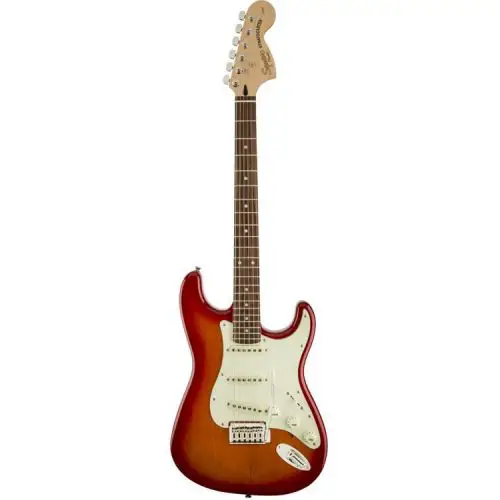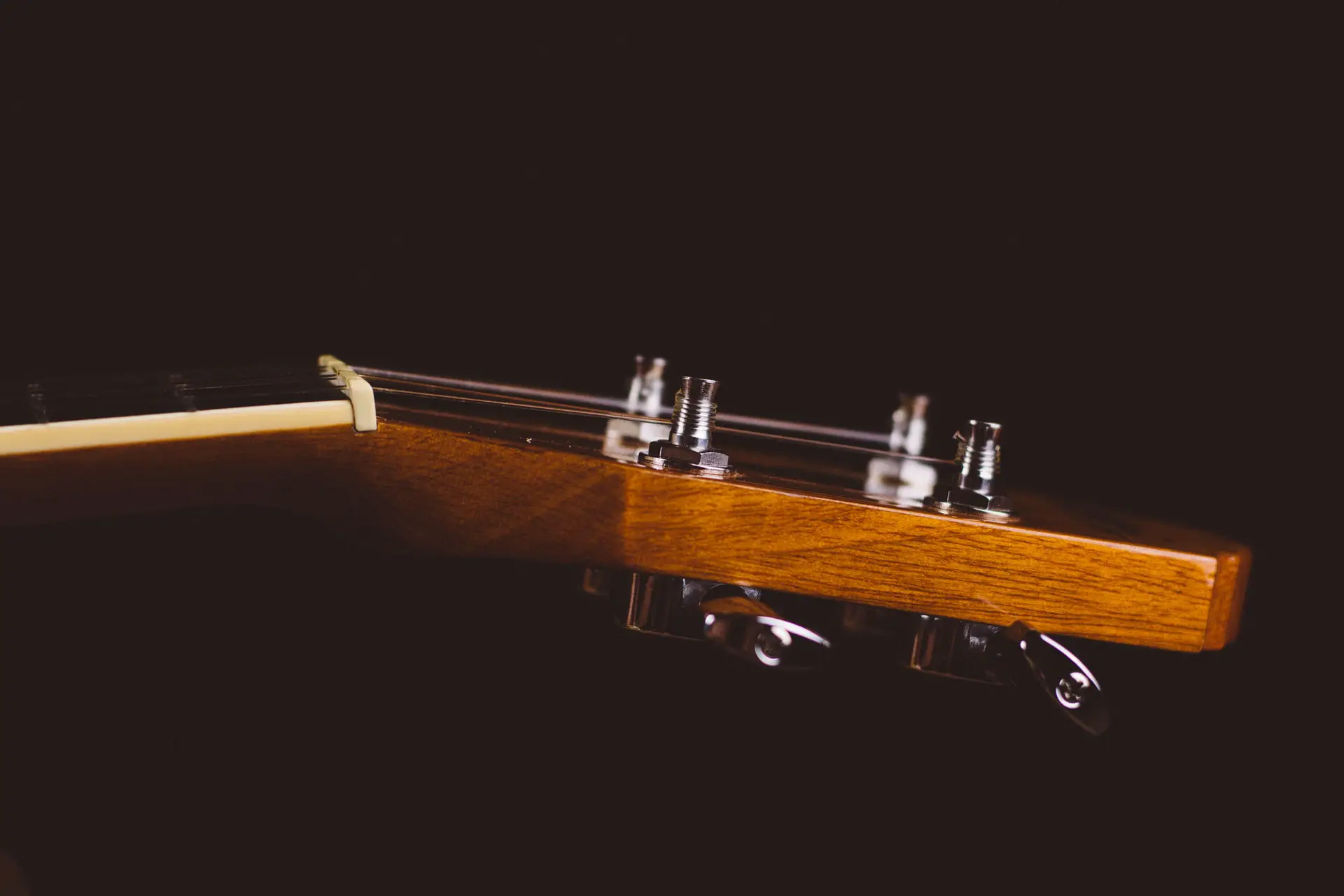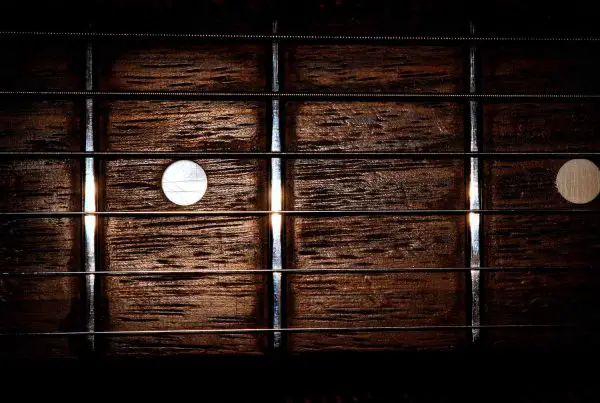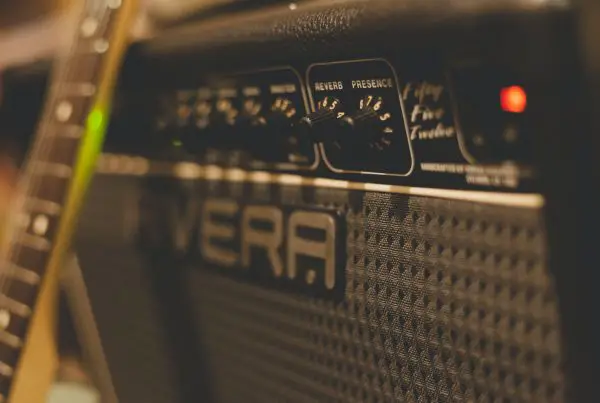Guitar neck reset is when you remove the guitar neck to modify the angle that connects to the body by tilting it back. Every guitar will require a neck reset at some point when you use them regularly.
If you own any kind of acoustic guitar for an ample amount of time, your instrument will likely require a neck reset at several points in its lifetime no matter what the thickness of the neck is.
One of the most challenging and complex jobs that I had to face as a guitarist was a neck reset. It can lead to some horrendous consequences if it is not done properly. So I spent abundant time understanding it so that I could perform the neck reset perfectly!
In this article, I will try to share the necessary tips and tricks regarding the guitar neck reset so that you do not make the same mistakes I did. The following topics will be thoroughly discussed:
- What does a neck reset do?
- How do you know when your guitar needs a neck reset?
- Does a neck reset devalue a guitar?
- How much does a neck reset cost?
- How to prevent a neck reset?
What Does a Guitar Neck Reset Do?
A guitar neck reset is done to adjust the angle at which the neck joins the instrument’s body. To do this, the neck is removed, and the angle is modified in a way that it tilts back a little.
A neck reset is a good way to save the guitar, and it will make the guitar play more comfortably. In order to do that, the neck reset must be done correctly.
The fingerboard extension is loosened, followed by the loosening of the neck. The neck is removed so that we can amend the angle at which the neck joins the body. Then we take some wood off the heel by removing a wedge so that it tilts backward when reattached.
The trick is to pivot the neck at the point it joins the body in such a way that it becomes more in line with the plane of the strings, and as a result, the action is reduced.
Learn more about changing the guitar neck and fretboard.

Guitar neck reset is where you adjust the angle of which the guitar neck joins the body.
How Do You Know When Your Guitar Needs a Neck Reset?
The main symptom of a guitar that needs a neck reset is uncomfortably high action.
If the neck angle of your guitar causes your action to be very high, then it is a clear indication that your guitar needs a neck reset.
Action is the distance between your strings and the fretboard. An unreasonably high action makes fretting a note very uneasy and uncomfortable. The guitar saddle of a guitar that needs a neck reset can not be taken lower without impacting the break-angle.
Other than that, you can also perform a solid test to figure out if your guitar needs a neck reset or not. If you draw an imaginary line along the top of the frets with a well-set guitar, it will touch the bridge right at the top edge.
You can sight along the neck from the headstock and figure out whether the fret-line hits below the bridge or not.
Related article: High Vs Low Action String: Which Is Easier To Play & Strum
How Often Does an Acoustic Guitar Need a Neck Reset?
It is common for good-quality acoustic guitars to require a neck reset only once every several decades if done properly.
In the lifetime of a guitar, there will most probably be only one or two neck resets.
Acoustic guitars typically need a neck reset once every 20-30 years due to the 200 or more pounds of tension that pull on the neck at all times. Slowly the neck is pulled forward, and that changes the angle at which it joins the body.
Some guitars might need neck resets more often, and that can be due to several different factors. For example, using heavy strings on your acoustic guitar might add extra string tension to the neck and pull the neck forward faster.
Guitars that are kept fully tuned with a high-action for extended periods of time might need neck resets more often than the ones that have their strings loosened when not in use.
Related article: Thin VS Thick Neck Guitar: Playability & Tone Difference
Does a Neck Reset Devalue a Guitar?
A well-done neck reset does not devalue a guitar, but it does revalue it. If a guitar needs a neck reset, it is devalued, and if the neck reset is done correctly, it regains the value previously lost.
Guitars can be changed in tone after a neck reset, and there have also been cases of guitars losing their tone after neck resets.
However, whether a guitar has had a neck reset or not means little to buyers. And it does not affect its value if the reset has been done properly.
The correct neck angle is critical to both the ease of playing and the tone of the guitar. So it is extremely important that the neck reset is done properly to retain the value of the instrument.
Do All Guitars Need Neck Reset?
Most acoustic guitars will need a neck reset once or twice in their lifetime. However, it is not very common for electric guitars to require a neck reset.
Any acoustic guitar set up to be very playable and kept that way for a significant amount of time will most likely require a neck reset sooner or later due to the tension that pulls on the neck.
Electric guitars are not likely to need a neck reset because there is less string tension than acoustic guitars, so there is less chance of the neck being pulled forward or the angle at which it joins the body being affected.

Electric guitar has lesser string tension – so it requires a neck reset much lesser than acoustic guitars.
How Long Does a Neck Reset Last?
A neck reset done correctly will probably last for the coming several decades, if not more. Therefore, most acoustic guitars need a neck reset only once in their lifetime if it is done correctly.
A good neck reset will last for a long time, which can be even 20-30 years if it is done correctly.
It is important to make sure that you reset your neck in the best possible way and the instrument feels as it did before the reset.
If the neck is not adjusted properly, then it is most likely that the guitar will immediately or eventually in the near future require another neck reset which is not only costly but also not good for the value of your guitar.
5 Easy Steps of Resetting An Acoustic Guitar Neck?
Neck resets can range from relatively easy to quite difficult, depending on the guitar’s construction. However, whether it is a bolt-on neck or a glued on one, the main steps of resetting the neck will remain the same, which are as follows:
- Loosen the fingerboard extension.
- Loosen the neck from the point it is attached to the body.
- Remove the neck so that it can be adjusted.
- Change the angle of the neck in a way that it comes in line with the string line.
- Bolt-on or glue back the neck in the most accurate way possible.
Here’s a YouTube video showing you a guitar neck reset.
What Causes An Acoustic Guitar To Need A Neck Reset?
Almost all acoustic guitars will need a neck reset at one point or another in their lifetime due to the 200 pound or more tension that pulls on the neck consistently.
The main cause of an acoustic guitar needing a neck reset is the consistent tension that the near bears in during the lifetime of the guitar. The wood settles, and the tension pulls the geometry of the guitar over time.
Over time the string tension stresses out your guitar neck. The top’s belly a little, the shoulders and neck holes can sink, and the neck gives in a bit. Overall, the tension over the years pulls the guitar out of shape, especially the neck.
Another cause of an acoustic guitar needing a neck reset is that sometimes the neck is not installed correctly initially, so it leads to immediate or eventual problems. It is quite easy to get the neck angle wrong during manufacturing.
So if you feel like your new guitar has symptoms of needing a neck reset like high and uncomfortable high, you should probably hurry and utilize your warranty because it is a manufacturing fault and will only worsen from here on!
Related article: Loose Guitar Strings: Reasons & Best Tightening Methods
How Much Does a Neck Reset Cost?
Generally speaking, a neck reset can cost somewhere between $200-$600. Of course, any deal between this range will depend on the condition of your guitar and your geographical location.
If you are getting a deal greater than this, then you should probably look for a better one!
The best way to get a good idea of the cost of the neck reset is to go around and visit various local music stores in your area and get a proper estimate of your instrument. Otherwise, figuring out the accurate cost is very difficult.
How Long Does It Take To Reset a Guitar Neck?
A guitar neck reset can take 20 minutes to 2 days, depending on the type of the guitar and its construction. It is easy to do a neck reset on a bolt-on neck but considerably harder on the glued ones.
It is easier to perform a neck reset on a guitar with a bolt-on neck because the neck can be easily removed and put back on after the adjustment quickly.
Glued-on necks require a lot more effort and hence time to be removed and then put back on. In addition, these necks demand the best adherence possible to the neck, so it is essential to give the glue a couple of days to dry before the instrument is used.
How To Prevent Guitar From Needing Neck Reset
The best way to prevent a guitar from needing a neck reset is to lessen the pull or the tension on the neck so that it is not pulled forward and make sure that your instrument’s neck is installed properly.
The pull of the guitar strings on the neck over a long time is considered the main reason behind neck angling problems that lead to a very high action that can only be fixed through a neck reset.
Preventing a guitar reset is that you should not leave your acoustic guitar highly tuned with high action for an extended period. One option can be to loosen your strings if you do not plan to use your instrument for some time.
Using light strings can also help reduce the string tension on the neck and make the guitar more comfortable to play.
Final Thoughts
Even though some steps can be taken to prevent your guitar from needing a neck reset, most acoustic guitar players will likely need to reset their guitar neck at some point or point in the lifetime of their instrument.
Hence, you should always check your guitar to see if it needs a neck reset or not because a correct neck angle is essential for the playability and tone of your guitar. Resetting a guitar neck is not inexpensive, but if you want to achieve a good quality tone, then it is necessary.
Hence, in case your action feels too high and uncomfortable, it is highly likely that your guitar needs a neck reset as soon as possible!





